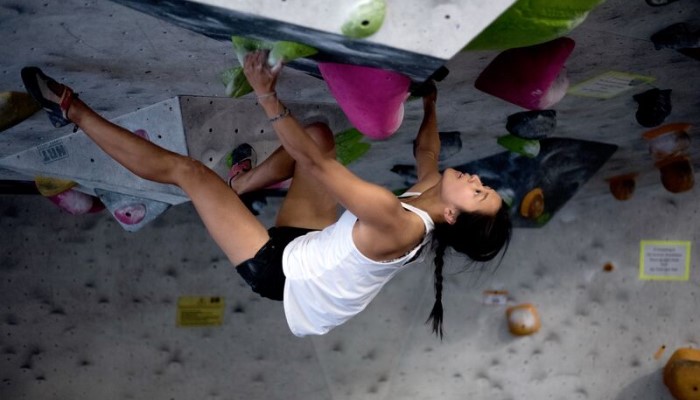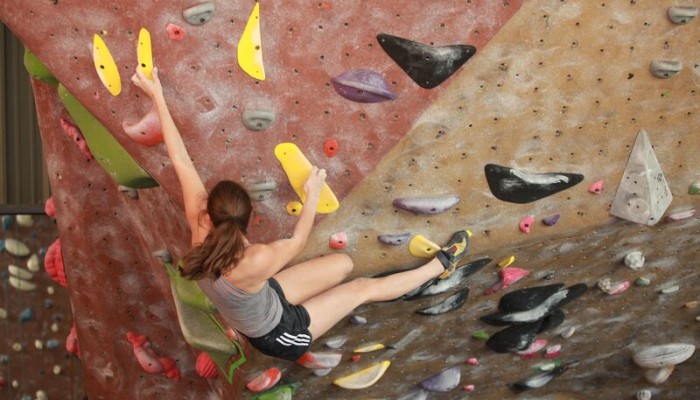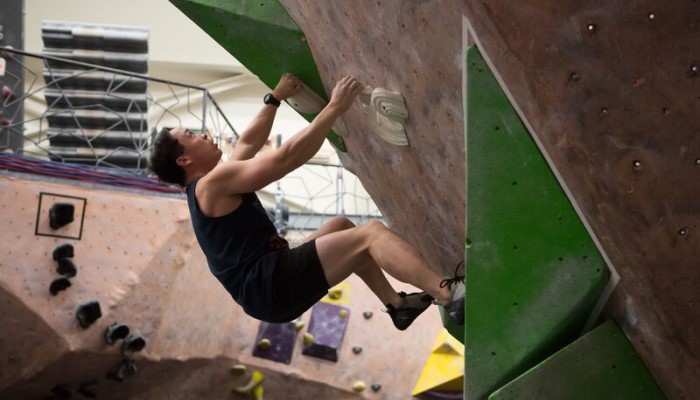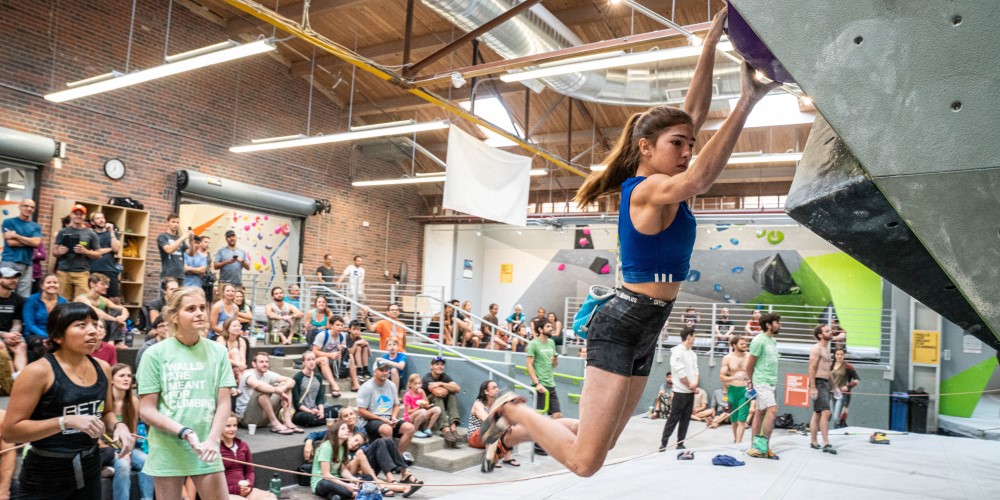Okay, I’ll say it; shorter climbers are, inherently, better at dynamic climbing than taller climbers.
Sure, this is a gross oversimplification to provide for an exciting click-bait-y first sentence, but it also has some base in fact. Longer limbs require more work to generate a dynamic movement.
So, while shorter climbers (I’m 5’3”) can sometimes be limited in what we can reach statically, they have a pretty sizable advantage in their mobility.
The key is how we learn to use dynamic movement and that is a skillset that is helpful for climbers of all sizes! So – here are 4 principals to look at when you are moving your body up the wall dynamically.
Make sure you're pushing and flagging

Many climbers are familiar with flagging (check out the basics of flagging below if you aren’t!).
Flagging is when you move one foot to your side to create a counter-weight and strong base. This flagged foot helps you maintain your tension as you push it into the wall and engage your core (which you should always do when you climb).
When climbing statically, your flagged foot is typically straight. When moving dynamically, keep your flagging leg very bent, and then straighten it as you move upward, maintaining as much tension as possible through the core. This does several things but most importantly, it keeps your body close to the wall, and gives you a little more force.
Finding exactly where to place this flagging foot is tricky, but typically, it should begin where we want the foot to end up at the end of the movement.
You'll need some cross-body tension

This one is hard to describe without being a little technical. Cross-body tension is applying various forces in opposition simultaneously to keep control of our bodies on the wall.
To help better understand it, imagine you have a right-hand side-pull. To create cross-body tension, you want to create a strong (tension) left foot (cross-body). Without cross-body tension, you will likely feel like you pulling a Hail Mary move.
In dynamic movements, you will be actively pulling against all your points of contact at once. So, if you jump from two opposing side-pulls, you will want to pull against each evenly. This also generally means you want your hips or feet more square to the wall.
Focus, aim, commit, execute (FACE)

FACE is fun because you can yell it at your friends as they climb and claim you are trying to encourage them. It stands for FOCUS, AIM, COMMIT, EXECUTE.
Focus on the hold you’re coming from. Many of us will start focusing on where we are going when our real focus should be on the hold(s) we are leaving.
Aim. Look where you are going, drop your hips down and find the path you want to take (check out me doing it below).
Don’t pump too many times though – each one takes energy and you want to save enough energy to….
Commit! Don’t go half-way on this – give it your full try! If you succeed, you’ve done all of FACE because the last step is to….
Execute. If you didn’t get the move, take a moment to reassess. Why didn’t you get it? Were you scared? Was your sequence wrong? Often, the answer is that we just didn’t commit. So…commit even more, and then execute again!
Keep your hips in

Have you ever taken a video of yourself dynoing or felt like you’re jumping far away from the wall when you let go? It’s very likely that your hips pull away from the wall as you jump.
This is typically a subconscious fear response. Ideally, in a full dyno, you start low and then bring your hips up, almost meeting your hands, then you stand up tall at the last moment before your feet leave any holds. Your hips should stay as close to the wall as humanly possible.
To help, I would suggest taking videos of yourself trying a hard dynamic movement and slowing the footage down to see if your hips are close enough to the wall. This is a situation where you have to evaluate what your body is doing before you can start correcting it. Remember, your hips go in enough that they’re almost meeting your hands and then you stand up tall before your feet leave any holds.
And that’s it. Now you know everything you need to know to dyno! With active flagging, cross-body tension, FACE, and hips in, you’ll find that those big moves just don’t look so big anymore (don’t worry—you’ll still look really cool making them).
Come climb with us. Find a Movement Gym near you.

